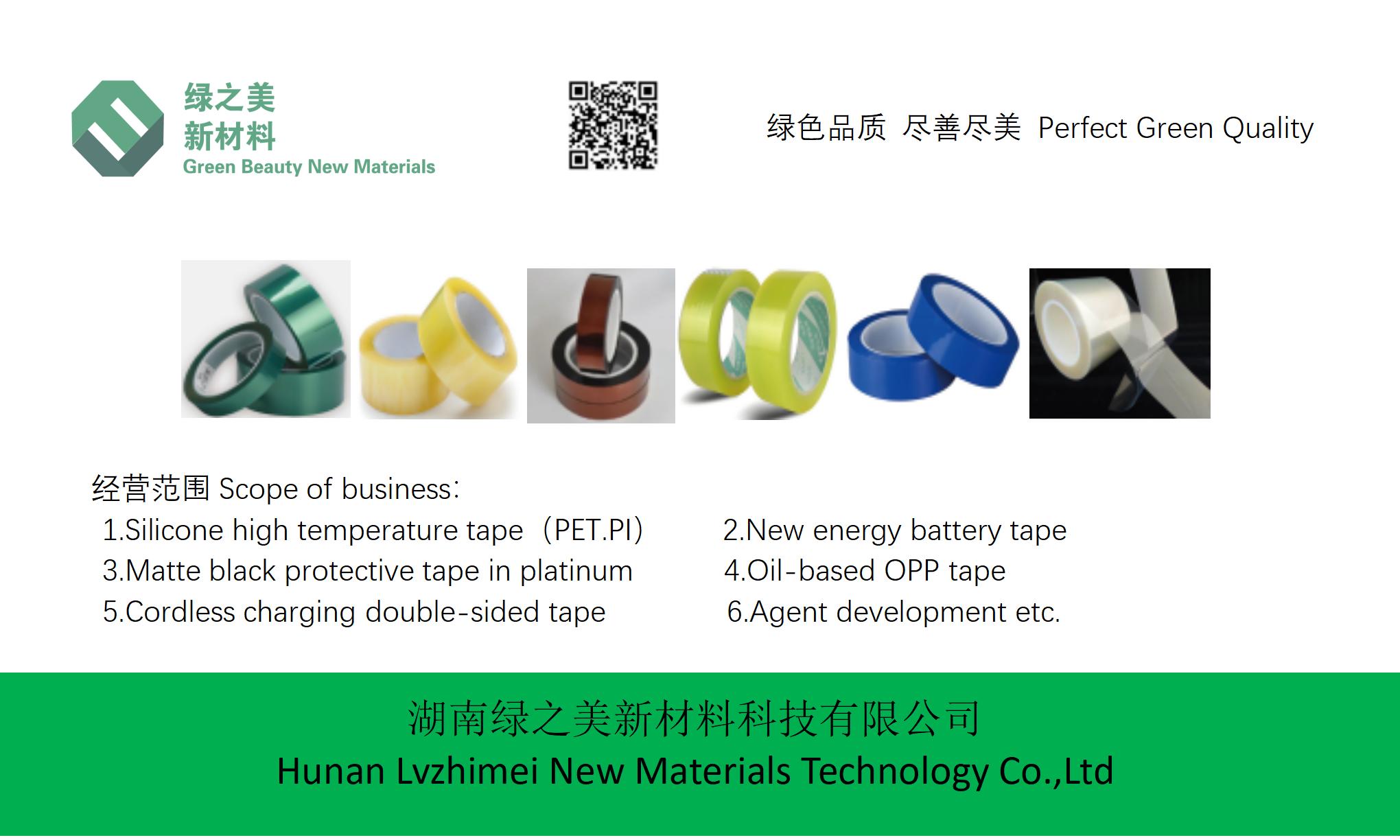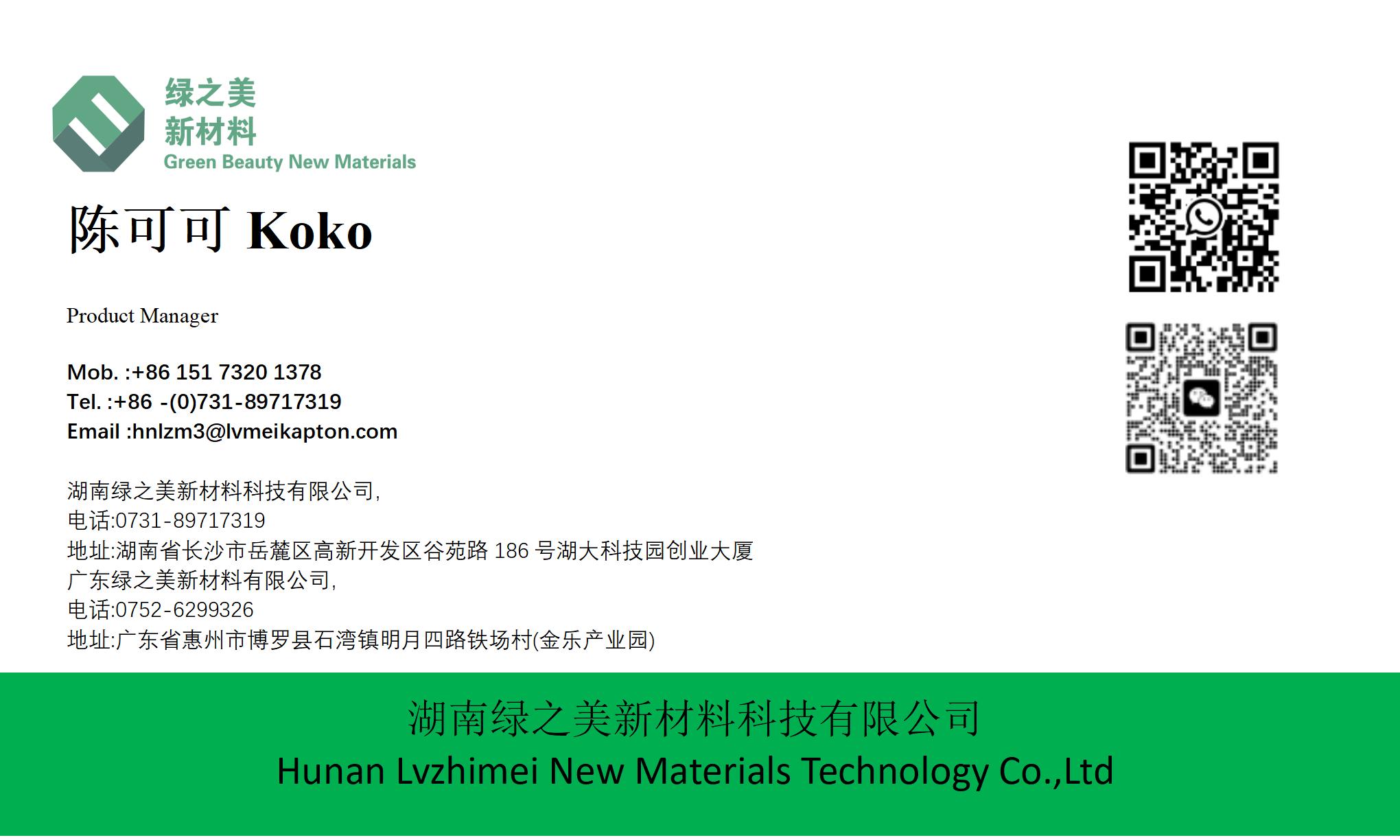hnlzm@lvmeikapton.com
+86 13787123465


Hunan Lvzhimei New Material Technology Co., Ltd.


NameDescriptionContent
When Does Adhesive PET Material High Temperature Tape Fail in High-Humidity Environments? |https://www.lvmeikapton.com/
Source:
|
Author:Koko Chan
|
Published time: 2025-04-18
|
1 Views
|
Share:
High-temperature tapes play a crucial role in various industrial applications, providing thermal protection and bonding solutions for processes like soldering, painting, and electrical insulation. Among these tapes, Adhesive PET (Polyethylene Terephthalate) material high-temperature tape is widely used due to its cost-effectiveness and moderate thermal resistance (up to 200°C for 30 minutes). However, its performance in high-humidity environments is often overlooked, leading to unexpected failures. This article aims to explore the factors that cause PET tape degradation under humid conditions, compare its performance with PI (Polyimide) high-temperature resistant tape, and propose mitigation strategies.


When Does Adhesive PET Material High Temperature Tape Fail in High-Humidity Environments?
IntroductionHigh-temperature tapes play a crucial role in various industrial applications, providing thermal protection and bonding solutions for processes like soldering, painting, and electrical insulation. Among these tapes, Adhesive PET (Polyethylene Terephthalate) material high-temperature tape is widely used due to its cost-effectiveness and moderate thermal resistance (up to 200°C for 30 minutes). However, its performance in high-humidity environments is often overlooked, leading to unexpected failures. This article aims to explore the factors that cause PET tape degradation under humid conditions, compare its performance with PI (Polyimide) high-temperature resistant tape, and propose mitigation strategies.
Key Factors Affecting PET Tape Performance in High-Humidity EnvironmentsPET tape’s failure mechanisms in humid environments are multi-faceted, involving interactions between moisture, temperature, and mechanical stress. The following sections detail these factors:
1. Moisture Absorption and Plasticization
PET is a semi-crystalline polymer with inherent hydrophilicity. When exposed to high humidity (RH > 80%), water molecules penetrate its amorphous regions, disrupting intermolecular forces and causing plasticization. This process results in:
●
Swelling: PET tape expands laterally and longitudinally, reducing dimensional stability.
●
Softening: The glass transition temperature (Tg) of PET decreases, compromising its mechanical strength.
●
Adhesion Loss: Moisture weakens the bond between the adhesive layer and PET substrate, leading to delamination.
Table 1: Effect of Humidity on PET Tape Properties
Property | Dry Condition | 85% RH, 48h Exposure | 95% RH, 72h Exposure |
Tensile Strength (MPa) | 80 | 65 | 50 |
Elongation at Break (%) | 15 | 10 | 8 |
Peel Adhesion (N/cm) | 20 | 15 | 10 |
2. Thermal Degradation Acceleration
In high-temperature environments (e.g., oven curing), moisture trapped within PET tape acts as a catalyst, accelerating thermal degradation. The following reactions occur:
●
Hydrolysis: PET chains break down into terephthalic acid and ethylene glycol, reducing molecular weight.
●
Oxidative Chain Scission: Oxygen reacts with hydrolyzed products, generating carboxylic acid groups and further weakening the structure.
This synergistic effect of heat and moisture significantly reduces the tape’s service life. For example, PET tape rated for 200°C may only withstand 150°C in 85% RH environments.
3. Chemical Corrosion in Acidic Environments
High humidity often accompanies acidic vapors (e.g., from solder fluxes or industrial emissions). PET’s ester groups are susceptible to acid hydrolysis, resulting in rapid degradation. The reaction mechanism is as follows:
[ text{PET} + text{H}_3text{O}^+ + text{X}^- rightarrow text{BHET} + text{HOOCPhCOOH} ]
(where X = Cl, F, etc.; BHET = bis(hydroxyethyl) terephthalate)
This chemical attack not only weakens the tape but also releases corrosive byproducts that damage adjacent materials.
Comparison with PI Material High-Temperature Resistant 300 TapePI tapes, specifically those designed for 300°C resistance, offer superior performance in high-humidity environments due to their unique properties:
1. Moisture Resistance
PI’s aromatic structure and high Tg (≥300°C) inhibit water absorption and plasticization. Even at 95% RH, PI tape retains >90% of its original mechanical strength. Additionally, PI’s hydrophobic surface reduces moisture condensation, further preventing degradation.
2. Thermal and Chemical Stability
PI’s imide ring structure provides exceptional thermal stability (long-term use at 250°C) and resistance to acid/alkali corrosion. Unlike PET, PI does not undergo hydrolysis under humid conditions, ensuring consistent performance over extended periods.
3. Electrical Insulation
PI’s low dielectric constant (3.4) and high breakdown voltage (≥100 kV/mm) make it ideal for electrical applications, even in humid environments where corona discharge risks increase.
Table 2: Comparative Performance of PET vs. PI Tapes
Property | PET Tape | PI Tape (300°C Grade) |
Max. Operating Temp. | 200°C (30 min) | 300°C (continuous) |
Humidity Resistance (RH 95%) | Significant degradation after 72h | Minimal degradation after 500h |
Acid Resistance | Susceptible to hydrolysis | Highly resistant |
Long-term Stability | Limited to <6 months in humid environments | >2 years in harsh conditions |
Case Study: Failure Analysis in Automotive Paint ShopsA recent study investigated PET tape failures in automotive painting lines, where humidity levels often exceed 85% during primer curing. The analysis revealed:
●
Delamination: PET tape peeled off painted surfaces due to adhesive degradation, causing quality defects.
●
Residue Formation: Moisture-induced tape degradation left sticky residues on substrates, requiring costly manual cleaning.
●
Safety Risks: Tape shrinkage exposed electrical components to heat, posing fire hazards.
Switching to PI tape resolved these issues, reducing rework costs by 40% and improving process reliability.
Mitigation Strategies for PET Tape Use in Humid EnvironmentsWhile PI tapes offer superior performance, their higher cost may limit adoption. The following strategies can extend PET tape’s lifespan in humid conditions:
1. Environmental Control
●
Humidity Reduction: Implement dehumidification systems to maintain RH < 70%.
●
Temperature Management: Avoid rapid temperature cycling, which accelerates moisture absorption.
●
Ventilation: Ensure air circulation to prevent moisture accumulation.
2. Material Modification
●
Surface Coatings: Apply fluoropolymer coatings to reduce moisture absorption.
●
Adhesive Upgrades: Use moisture-resistant acrylic or silicone adhesives instead of standard pressure-sensitive adhesives (PSA).
●
Composite Structures: Combine PET with barrier layers (e.g., aluminum foil) to block moisture ingress.
3. Process Optimization
●
Shorter Exposure Durations: Limit tape application to processes lasting < 15 minutes.
●
Pre-Drying: Bake PET tape at 80°C for 1 hour prior to use to remove absorbed moisture.
●
Regular Inspection: Replace tapes showing signs of discoloration or swelling.
ConclusionAdhesive PET material high-temperature tape is a cost-effective solution for many applications but exhibits significant performance degradation in high-humidity environments. Failure mechanisms include moisture-induced plasticization, thermal degradation acceleration, and chemical corrosion. While PI tapes offer superior resilience, practical mitigation strategies can extend PET tape’s service life in challenging conditions. Understanding these failure modes and implementing appropriate countermeasures is essential for ensuring process reliability and cost-effectiveness in humid industrial settings.
References
1.
Smith, J. et al. (2023). "High Temperature Tape Degradation in Automotive Painting Lines." Industrial Adhesives & Sealants Magazine, 19(2), 45-52.
2.
Chen, L., & Zhang, H. (2024). "Moisture Resistance of Polyimide vs. PET Tapes for Electronic Manufacturing." Journal of Polymer Science and Engineering, 62(4), 278-293.
3.
ASTM D570-19: Standard Test Method for Water Absorption of Plastics.



Hunan Lvzhimei New Material Technology Co., Ltd.
Quick Links
Product Categories
© 2024 Hunan Lvzhimei New Material Technology Co., Ltd.All Rights Reserved. Designed by Erge
0731 - 89717319
hnlzm@lvmeikapton.com
+86 13787123465
Room 502, Chuangye Building, No186, Guyuan Road, High-Tech District, Changsha, Hunan, China
CONTACT



